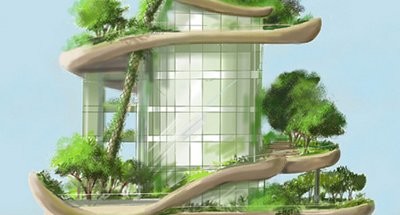As we stand on the brink of a climate crisis, it’s imperative that we reevaluate our approach to construction. Buildings, which account for a substantial portion of global energy consumption and carbon emissions, need to adapt and become more environmentally friendly. The construction industry has been undergoing a significant transformation in recent years, with a growing emphasis on sustainable building practices, including the use of aluminium sheet and heavy duty shelving for improved sustainability. These practices not only reduce environmental impact but also create healthier, more efficient spaces for occupants. In this article, we’ll delve into the innovative ways in which sustainable building practices are reshaping the construction landscape.
Reducing Environmental Footprints
One of the primary goals of sustainable building practices is to minimize the environmental footprint of construction projects. This involves using materials and methods that are less resource-intensive and produce fewer emissions. Traditional construction often involves the heavy use of concrete and steel, both of which are associated with high carbon emissions. Sustainable builders are exploring alternatives like bamboo, recycled materials, and engineered wood products, which are not only eco-friendly but also often more cost-effective.
Solar Power Integration
Harnessing the power of the sun has become a cornerstone of sustainable construction. Solar panels are now a common sight on rooftops, providing clean and renewable energy for the building. Moreover, architects and designers are incorporating passive solar design principles, which maximize natural sunlight and minimize the need for artificial lighting and heating. This not only reduces energy consumption but also creates more comfortable and inviting spaces for occupants.
Innovative Insulation Techniques
Proper insulation is crucial for maintaining comfortable indoor temperatures while minimizing energy usage. Sustainable building practices have seen a surge in the use of advanced insulation materials like aerogels and vacuum insulated panels. These materials offer superior thermal performance compared to traditional options, allowing for more energy-efficient buildings. Additionally, architects are designing structures with improved sealing and airtightness to prevent heat loss and drafts, further contributing to reduced energy consumption.
Efficient HVAC Systems
Heating, ventilation, and air conditioning (HVAC) systems are notorious energy guzzlers in traditional buildings. Sustainable construction is changing this with the adoption of energy-efficient HVAC technologies. Variable refrigerant flow (VRF) systems, for example, provide precise temperature control while consuming less energy. Moreover, the use of geothermal heat pumps and natural ventilation strategies is becoming more prevalent, offering sustainable alternatives to traditional HVAC systems.
Green Roofs and Vertical Gardens
Urbanization has led to the proliferation of concrete jungles, but sustainable building practices are bringing nature back into our cities. Green roofs, covered in vegetation, provide numerous benefits, including improved insulation, reduced stormwater runoff, and enhanced air quality. Vertical gardens, or living walls, not only add a touch of greenery to urban environments but also help mitigate the urban heat island effect. Both of these practices are excellent examples of how sustainable building can harmonize with nature to create healthier and more sustainable living spaces.
Water Conservation and Recycling
Sustainable building practices extend beyond energy efficiency to water conservation. Collecting rainwater for irrigation and toilet flushing is a common practice in green buildings. Furthermore, advanced water recycling systems are being integrated into modern constructions, reducing the demand on freshwater resources. These initiatives not only save water but also help mitigate the impacts of droughts and water scarcity.
Smart Building Technology
In the age of digitalization, it’s no surprise that smart building technology is playing a significant role in sustainable construction. Sensors and automation systems are being employed to optimize energy use, lighting, and HVAC systems based on real-time data. This not only reduces energy wastage but also improves occupant comfort. Additionally, smart building systems can detect and address maintenance issues promptly, extending the lifespan of building components and reducing the need for frequent replacements.
Adapting to Changing Needs
In today’s rapidly changing world, adaptability is key. This aspect subtly brings us to the importance of adaptability in modern construction, especially in the context of temporary buildings UK. These structures can be integrated seamlessly into sustainable building projects to provide extra space for various purposes, from pop-up shops to emergency healthcare facilities, without compromising on sustainability goals. This aspect subtly brings us to the importance of adaptability in modern construction. Temporary structures are often an ingenious solution for rapidly changing needs. These structures can be integrated seamlessly into sustainable building projects to provide extra space for various purposes, from pop-up shops to emergency healthcare facilities, without compromising on sustainability goals.
In conclusion, sustainable building practices are indeed reshaping the construction landscape. From reducing environmental footprints and harnessing solar power to innovative insulation techniques and efficient HVAC systems, the construction industry is embracing sustainability as a guiding principle. Green roofs, water conservation, smart building technology, and adaptability are all contributing to the transformation of the way we build our structures. As we move forward into an era where environmental concerns are paramount, sustainable building practices are not just an option but a necessity for a better, more sustainable future.
You might also enjoy:
- Energy-Saving Gadgets for a Greener Home
- Robert Bilus Highlights the Role of Industrial Engineering in Advancing the Circular Economy
- Innovative Business Ideas That Are Changing the Future
- Bionassay’s Respectful Sourcing in Sustainable Skincare
- Innovation in Place Making: M. von Nkosi’s Journey of Independence and Creative Problem Solving
